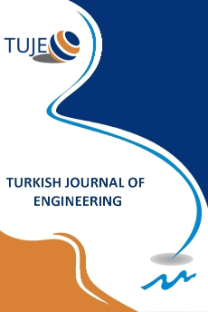Cantilever piles or well foundations in supporting temporary deep excavations: comparison of performance, safety and cost
Cantilever piles or well foundations in supporting temporary deep excavations: comparison of performance, safety and cost
Deep excavation, Cantielever piles, Well foundation Finite element method, Cost-Safety-Performance,
___
- Bian Y H & Huang H W (2006). Fuzzy fault tree analysis of failure probability of SMW retaining structures in deep excavations. GeoShanghai International Conference 2006, 312-319. doi: 10.1061/40867(199)38
- Biot M (1937). Bending of an infinite beam on an elastic foundation. Journal of Applied Mechanics, 203, 1-7.
- Boone S J (1996). Ground-Movement-Related Building Damage. Journal of Geotechnical Engineering, 122, (11), 886-896, doi: 10.1061/(asce)0733-9410(1996)122:11(886)
- Bowles J E (1997). Foundation Analysis and Design. The McGraw-Hill Companies, Inc., ISBN: 0-07-912247-7
- Brinkgreve R B J, Kumarswamy S, Swolfs W M, Zampich L & Manoj N R (2019). PLAXIS 2D Tutorial Manual CONNECT Edition V20. Plaxis.
- BS EN 1997-1:2004 British Standard. (2004). Eurocode 7: Geotechnical design - Part 1: General rules. In Journal of Constructional Steel Research.
- Gajan S (2011). Normalized relationships for depth of embedment of sheet pile walls and soldier pile walls in cohesionless soils. Soils and Foundations, 51(3), 559-564. doi:10.3208/sandf.51.559
- Göksa Mühendislik Yazılım Ltd. Şti. (2020, Aralık 22). istCAD Yeni Deprem Yönetmeliğine Tam Uyumlu Duvar Analiz, Tasarım ve Çizim Programı . www.göksa.com.tr.
- Laefer D F, Ceribasi S, Long J H & Cording E J (2009). Predicting RC Frame Response to Excavation-Induced Settlement. Journal of Geotechnical and Geoenvironmental Engineering, 135(11), 1605-1619. doi:10.1061/(asce)gt.1943-5606.0000128
- Leisenring B R (2012). Damage to adjacent building during construction-Expert investigation. Lanchester: Robson Forensic.
- Meyerhoff G G & Baike L D (1963). Strength of steel culverts sheets bearing against compacted sand backfill. Highway Research Board Proceedings, pp. 1-19
- Sabatini P J, Pass D G & Bachus R (1999). Ground Anchors and Anchored Systems. Geotechnical Engineering Circular No.4, Federal Highway Administration, Publication No. FWA-IF-99-015
- Selvadurai, A. P. S., & Gladwell, G. M. L. (1980). Elastic Analysis of Soil-Foundation Interaction. Journal of Applied Mechanics, 47(1), 219 doi:10.1115/1.3153622
- T.C. Çevre ve Şehircilik Bakanlığı (2019). 2019 yılı İnşaat ve Tesisat Birim Fiyatları. Ankara, Turkiye: Yüksek Fen Kurulu Başkanlığı.
- Terzaghi K (1955). Evaluation of coefficients of subgrade reaction. Geotechnique, 5(4), 297-326, doi:10.1680/geot.1955.5.4.297
- Wang X & Liu Y (2009). Overview of the assessment on the damage from underground excavating on adjacent buildings. Chinese J. Underground Space Eng., 4, 841-847
- Wang W D & Xu Z H (2010). Simplified analysis method for evaluating excavation-induced damage of adjacent buildings. Journal of Geotechnical Engineering, 32(1), 32-38.
- Winkler E (1867). Die Lehre von Elastizat and Festigkeit (on Elasticity and fixity), 182, Prague
- ISSN: 2587-1366
- Yayın Aralığı: 4
- Başlangıç: 2017
- Yayıncı: Mersin Uüniversitesi
Repairing of damaged composite materials and self-healing composites
Yusuf KEPİR, Alper GÜNÖZ, Memduh KARA
A statistical investigation to determine dominant frequency of layered soil profiles
Partial engine fault detection and control of a Quadrotor considering model uncertainty
Design and implementation of a cost effective vacuum cleaner robot
Selçuk KAÇIN, Halil Çağrı YILMAZ, Cemil ÇAĞLAR
Aluminum in food and potential role on Alzheimer’s disease of aluminum
